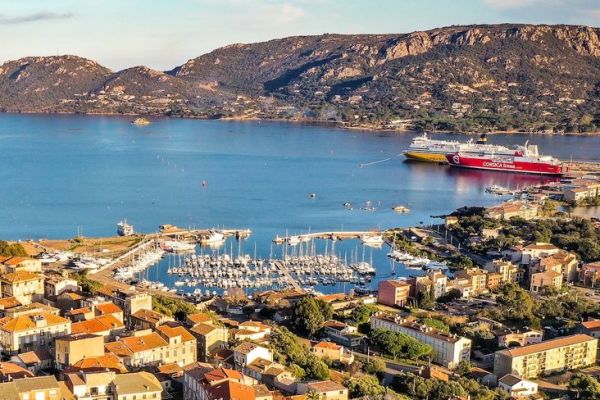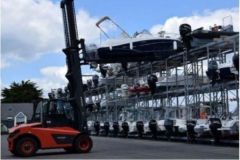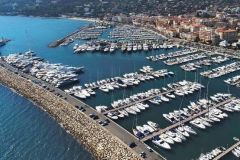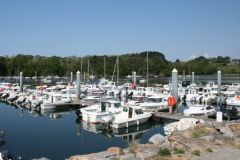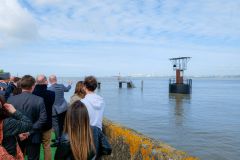Meeting the standards of modern yachting
Created in the 1960s, the port of Porto-Vecchio had not seen any major investments since its creation. The Corsican municipality has therefore chosen to invest in this major tool of local tourist appeal, as Julien Galichet, director of the project to extend and modernize the Porto-Vecchio marina and fishing port, explains: "The port, designed in the 1960s, no longer corresponds to the current standards of yachting, both in terms of capacity - we are facing chronic under-capacity, and in terms of service. The environmental issues are not taken into account, both the treatment of black and gray water, or the circulation of water in the basin, with strong sedimentation, the port being located at the bottom of the Gulf."
A 110 Meuros project
The city of Porto-Vecchio has therefore decided to invest heavily in a 6-year project starting in 2022. The budget allocated is significant, estimated between 110 and 120 Meuros, with clear general criteria, says the person in charge of the file: "There are 4 axes: environmental exemplarity, the securing of the nautical practice, to accompany a strong practice on the water, being the 1st nautical destination of Corsica, the attractiveness of the nautical offer and the mobilization of the local economic and sporting fabric"

Doubling of the number of berths
Afloat, major marine engineering work, with the creation of new dykes, will increase the surface area of the port from 15,000 m2 to 90,000 m2, and the capacity from 380 to 803 places afloat. Julien Galichet underlines: "With a basin multiplied by 6 and the number of rings by 2, the basin will be more spaced out, the breakdowns less dense, which will add to the comfort and safety of maneuvers. We will also be able to accommodate larger boats, even if the port remains oriented towards small yachts of less than 10 meters, which represent 55% of the berths, with medium-sized yachts of 10 to 30 meters taking up 40% and the remaining 5% being intended for large yachts."
200 meters of eco-designed docks, with deliberately rough concrete, will allow biodiversity to take hold.
Investments on land
On land, 2,000 m2 of new buildings will house the operating, technical and sanitary premises. The harbour master's office will be installed alongside the coastal management services, whether it be the nautical police, the sea rescue service or the environmental office, in an integrated management approach.
Between 2,500 m2 and 3,000 m2 of commercial premises will be offered to businesses, primarily nautical, for fittings, rentals or sea trips. Tertiary premises will be used by companies, and by visiting boaters in a coworking space.
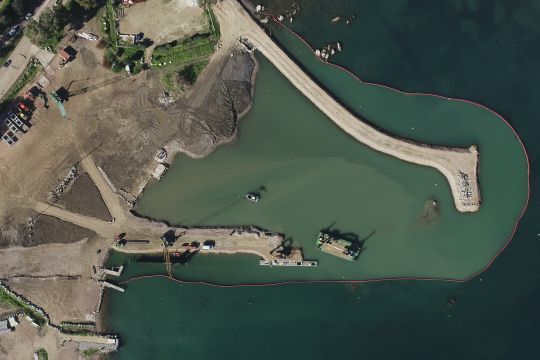
Technical infrastructure
A technical area will be built to support the shipyards located near the port. In particular, it will benefit from a 12-meter wide lifting cart with a lifting capacity of more than 150 tons, the largest lifting equipment in Corsica.
A treatment plant for black and grey water, in accordance with modern standards, will be built. Julien Galichet adds: "In our environmental thinking, we plan to recover rainwater in two large basins for rinsing boats and dealing with droughts. The treated water should be recovered for watering the green spaces. We also have an agreement with StellaMare, a laboratory of the University of Corsica, to develop a protocol for the reimplantation of protected species and the introduction of biofiltering oysters."
Long-term work
Work began in the spring of 2022 and is scheduled to continue until 2028, with an annual shutdown during the season from June 15 to September 15. Civil works started in October 2022 and will continue through 2023-2024. For the land-based projects, architectural competitions are scheduled to be launched in the spring of 2023.

